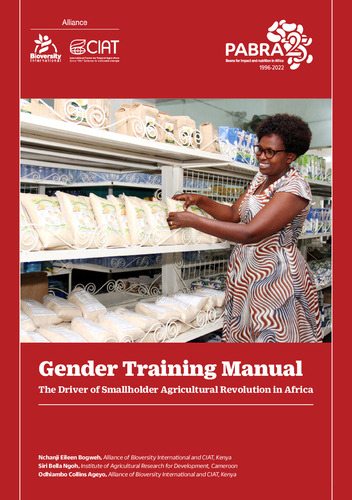Gender training manual: The driver of smallholder agricultural revolution in Africa
Abstract
Agriculture remains the engine of growth and poverty reduction Sub-Sahara Africa. For decades, women, youths, and men have made significant contributions to agricultural and rural economies globally even though their roles vary considerably within regions and are rapidly changing. Rural women pursue multiple livelihood strategies and often manage complex households and farm activities. These activities typically include producing agricultural crops, domestic chores, working for wages in agricultural or other rural enterprises, collecting fuel and water, engaging in trade and marketing, caring for family members. Many of these activities are not defined as “economically active employment” but are essential to the wellbeing of rural households. The agricultural sector in many developing countries is underperforming, in part because women, who represent a crucial resource in agriculture and the rural economy through their roles as farmers, labourers and entrepreneurs, are often invisible and face various challenges. To remedy this situation, gender mainstreaming is proposed as the blueprint for achieving all of the 17 Sustainable Development Goals (SDGs); including gender equality (SDG 5). This is because gender is a crosscutting theme that permeates across all the SDG goals whether in poverty eradication, clean water and sanitation, life on land and peace, justice, and strong institutions, among the various goals, gender issues are ever present. A clear understanding of gender dynamics that extend beyond the simplistic roles of different sexes, and society-prescribed taboos about women and allocation of resources need particular focus.
This manual will start by defining key gender terms and concepts, diverse gender and development approaches. A deep dive into gender issues using recent Gender frameworks such as the reach, benefit, empower and transform, tools and analysis that
inform gender mainstreaming and gender transformative action plans.

